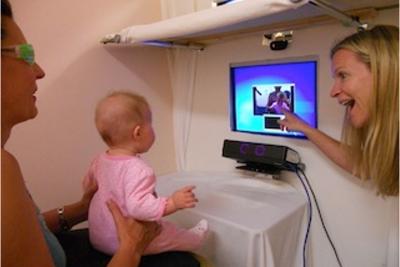
NTID researcher Rain Bosworth, pictured right, in 2016, uses eye-tracking technology that offers a non-invasive and powerful tool to study cognition and language learning in pre-verbal infants. Image credit: Rain Bosworth, RIT/NTID
While it isn’t surprising that infants and children love to look at people’s movements and faces, recent research from Rochester Institute of Technology’s National Technical Institute for the Deaf studies exactly where they look when they see someone using sign language. The research uses eye-tracking technology that offers a non-invasive and powerful tool to study cognition and language learning in pre-verbal infants.
NTID researcher and Assistant Professor Rain Bosworth and alumnus Adam Stone studied early-language knowledge in young infants and children by recording their gaze patterns as they watched a signer. The goal was to learn, just from gaze patterns alone, whether the child was from a family that used spoken language or signed language at home.
The study, published in Developmental Science, showed that the non-signing infants and children looked at areas on the signer called “signing space,” in front of the torso. The hands predominantly fall in this area about 80 percent of the time when signing. However, the signing infants and children looked primarily at the face, barely looking at the hands.